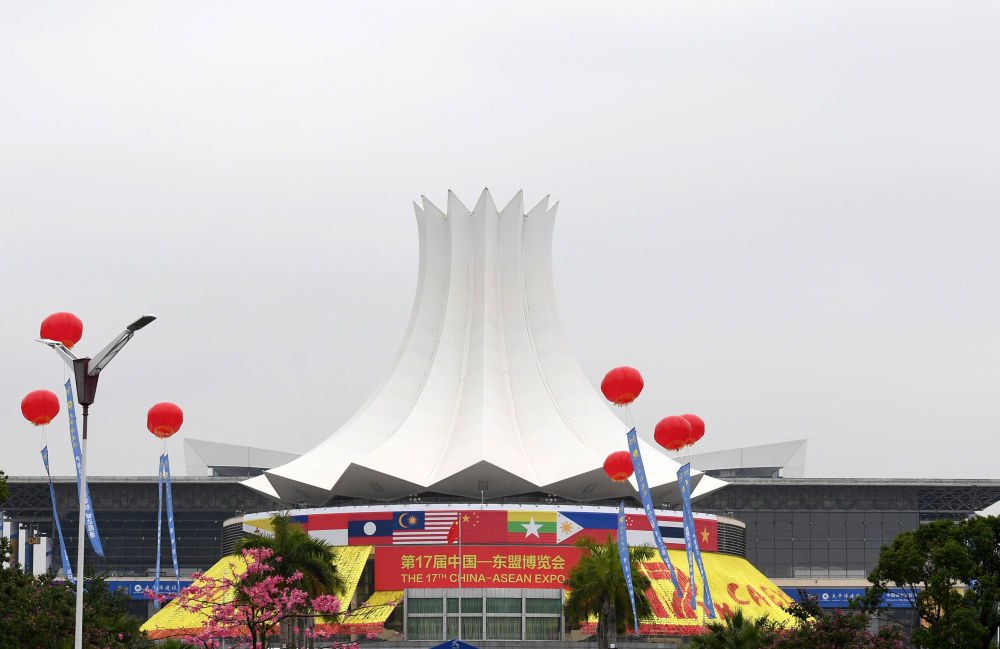Despite the severe impact of the world’s COVID-19 epidemic, China’s trade with ASEAN is still rising against the trend, achieving a historic breakthrough in the first three quarters of this year as the two sides as the largest trading partners.
“It is our pride that ASEAN has become China’s largest trading partner this year,” said Azlimi Zakaria, Consul General of Malaysia’s Consulate General in Nanning.
“I am confident that ASEAN’s cooperation with China will continue to deepen and work together to make the ASEAN region a region of peace, stability, security and prosperity,” said Vilaza Songpong, Consul General of the Laos Consulate General in Nanning.

Under the epidemic, the 17th China-ASEAN Expo and the China-ASEAN Business and Investment Summit were not absent. Leaders of China and ASEAN countries delivered video speeches at the opening ceremony. A number of well-known enterprises such as the world’s top 500 signed up for the physical exhibition. Many overseas merchants negotiated online procurement negotiations through the “Cloud East Expo”. More than 160 economic and trade promotion activities have been held one after another.
“The Expo was held reminding us of the importance of close cooperation, which is an important cornerstone of the China-ASEAN Expo’s continuous success and the establishment of business partnerships between the two sides over the years.” Lin Yuhui, Secretary-General of ASEAN, said.
China and ASEAN have a long history of friendly relations. In 2003, China established a strategic partnership with ASEAN, and in 2010, the China-ASEAN Free Trade Area was established. Under the framework of the China-ASEAN “10+1” win-win model, the total trade between the two sides has increased from $54.8 billion in 2002 to $481 billion in the first three quarters today.
Guangxi Liugong Group Co., Ltd. is an early construction machinery enterprise to start overseas layout. Since 2004, it has established a perfect marketing and service network in the ASEAN region, and the sales volume of products in this region accounts for about 25% of the entire overseas market. Chen Wei, general manager of Liugong International Business Center Asia-Pacific Company, said that through years of deep cultivation in the ASEAN national market, more and more customers know Liugong and trust Liugong.
The East China Expo has always focused on promoting China-ASEAN friendly and cooperative relations, built a cooperation platform, unblocked trade and investment channels, and promoted exchanges in finance, logistics, science and technology and other fields. With the acceleration of the Belt and Road Initiative and the ASEAN Interconnection Master Plan 2025, a number of cooperation projects such as Yawan High-Speed Railway, China-Old Railway, and China-Malaysia “Two Parks” have continuously made new progress.
Recently, the Vientiane Station of the China-Old Railway was roofed, which marks that the largest station of the China-Old Railway has successfully completed the main structure construction task. This China-Laos Railway, which starts from the port Moding in the north and reaches Vientiane, the capital of Laos in the south, is an overseas railway project mainly invested and built by China, jointly operated by China and Laos and directly connected to the Chinese railway network. After the completion of the project, Laos will change from “land lock country” to “land alliance”, and the enterprises and people of both sides will receive specific benefits.
China’s comprehensive opening-up has been accelerating. After eight years of deliberation, the Regional Comprehensive Economic Partnership Agreement (RCEP) was recently officially signed, and the world’s largest free trade area was born, covering ASEAN, China, Japan and South Korea and other economies. The signing of RCEP will bring a great impetus to the development of economic globalization, and will also usher in a new era of rapid development in the economic and trade exchanges between ASEAN and China. Huang Yurong, Consul General of the Vietnamese Consulate General in Nanning, said.

China has always regarded ASEAN as a priority direction of surrounding diplomacy and a key area for high-quality joint construction of the Belt and Road Initiative. It has continuously deepened strategic mutual trust, relied on the construction of new land and sea corridors in the west, and strengthened the interconnection and cooperation of railways, highways, ports, airports and other infrastructure. Cooperate in e-commerce, digital trade, 5G network and other fields to cultivate new economic growth points.
At the logistics center of Pingxiang Port of National Railway in Guangxi, trains full of cargo are from China to Vietnam. Since the first China-Vietnam train opened in 2017, the traffic volume has been increasing and the goods have become more and more abundant.” Meng Yong, deputy general manager of Guangxi Ningtie International Logistics Co., Ltd., said.
The growth of China-Vietnam trains highlights the vitality of the region’s economy and the vision of deepening cooperation. Lei Xiaohua, deputy director of the Southeast Asia Research Institute of the Guangxi Academy of Social Sciences, said that with the signing of the RCEP, China’s ties with ASEAN countries will be closer, and the volume of trade and investment are expected to continue to grow.



